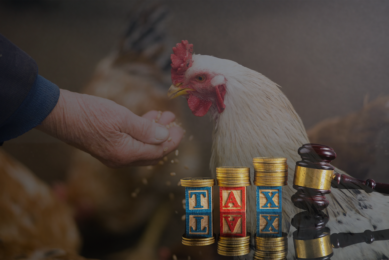Looking back on ‘Future Woolscapes’

My mind sometimes wanders off to the time when I did my internship at the University of Sydney (back in 1999). What did I see during these nine months of being down under, nothing but sheep, sheep and more sheep.
This triggered me to look for some data on the current sheep sector in Australia and what the current agri-challenges are in this part of the world. I remember people at the University talking about the challenges present in Australia (drought, liver fluke, soaring wool prices and declining sheep numbers). All new for me at the time.
While browsing through the internet I came across an interesting report from representatives from the wool and other industries. In 2004 and 2005, 20 experts came together to begin an 18-month long process of examining a range of key issues that may impact on the world and wool industry over the next 25 years. They named it the ‘Future Woolscapes‘ project (led by Land and Water Australia) in which the experts (both within Australia and overseas) prepared papers around the challenges. It is interesting to have a look at them as they have been prepared almost 10 years ago. Are these views still current or were they too optimistic (or negative?).
Bigger farms and ageing farmers
For example, it has been predicted that by the year 2020, the number of grain farmers in Australia would be reduced by half compared to 2004. In 2003-04, almost 30,000 farmers in Australia grew wheat, using half of the agricultural land dedicated to cropping. This is now reduced to less than 20,000 growers in 2011. Maybe by 2020, it would be reduced even more? It certainly looks like it. In terms of production we see an increase though, total wheat production grew from 21.9 million tonnes in 2004 to 27 million tonnes in 2013. It is a trend seen in many parts of the world. Farms are becoming bigger in order to survive and still make a profit.
The same study also predicted that the demographic structure of Australian woolgrowers would change further, with the average age of woolgrowers expected to continue to increase until around 2016 or 2021. The median age of farmers already increased by nine years between 1981 and 2011, while the median age of other workers increased by just six years. Farmers are more likely to continue working well beyond the age at which most other workers retire. They predicted this in the ‘Future Woolscapes’ project and they were right.
Welfare and biotechnology
The experts also shared their views on the rising concerns about animal welfare. These rising concerns in Australia (and other parts of the world) are a natural result of ethical concerns moving beyond people to animals. Australian farmers are environmental stewards, owning, managing and caring for 61% of Australia’s land mass. The society and consumers expect that the farmers sustainably manage their land and animals, and also be able to detail all practices (especially regarding animal welfare and environmental considerations).
The experts expected ten years ago that the rules would get stricter, and they were right. In the 2009-10 Budget, the government announced the Live Trade Animal Welfare Partnership, which will invest $3.2 million (2.3 million euro) over the next three years, including $1.6 million (1.16 million euro) from the government with matching support from Australian producers and livestock exporters to further improve animal welfare in, and support trade with, overseas markets. But a group of Australian sheep producers is concerned. The use of the crutching saddle is no longer possible for example and working dogs have to be muzzled. They think the rules are far too strict and some say the rules have been prepared by “city minority groups” with no idea about life on the land.
Sheep entering genomic era
The last topic I want to highlight from the 2004-2005 report is the biotechnology and its use in enhancing productivity in livestock. The experts named in the report that by 2029, emerging technologies such as improved understanding of the biological characteristics of sheep, through genomics and proteomics which, if pursued vigorously, promises to provide improvements in quality and disease resistance. Since then, sheep certainly entered the genomic era. For example, the Sheep CRC has successfully executed the Sheep Genomics Pilot Project and more evidence has been gained for a significant number of new QTL for body weight and growth rate in sheep such as this one from my internship supervisor Herman Raadsma and his team. All very promising research! And although sheep numbers are increasing a little bit, Australia can be more competitive by having this specialised genomic knowledge rather than trying to keep dominating the wool industry. I am afraid China will be dominating this market (in the near future) soon.











